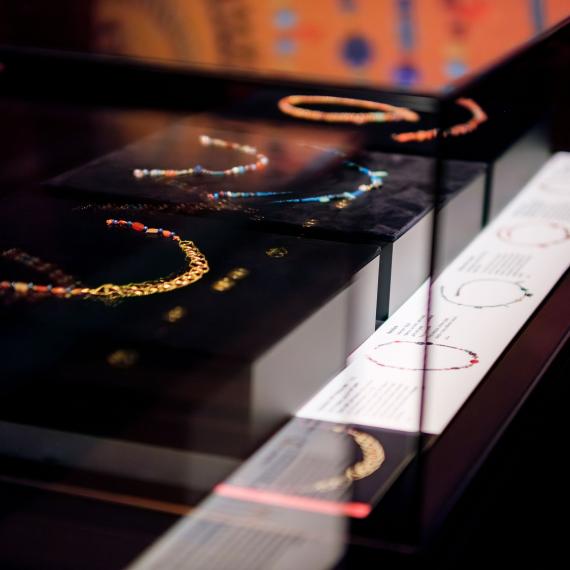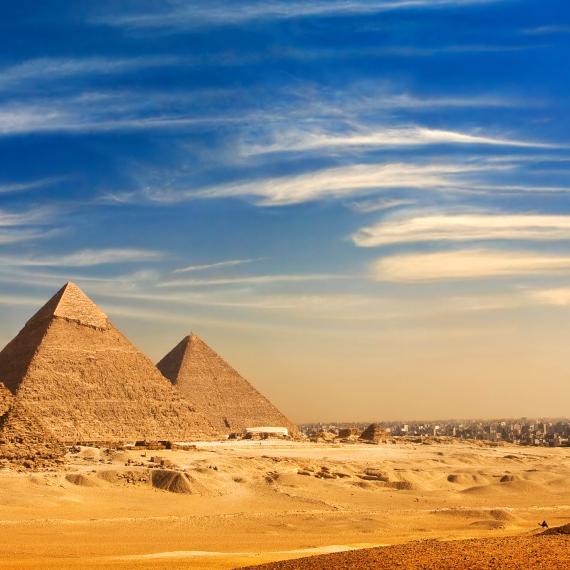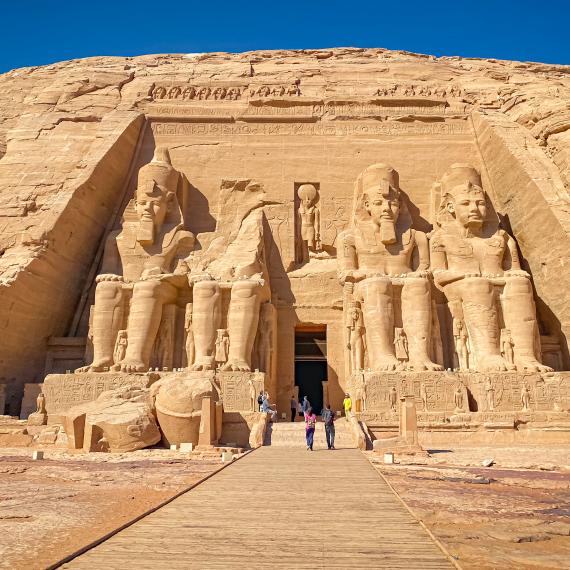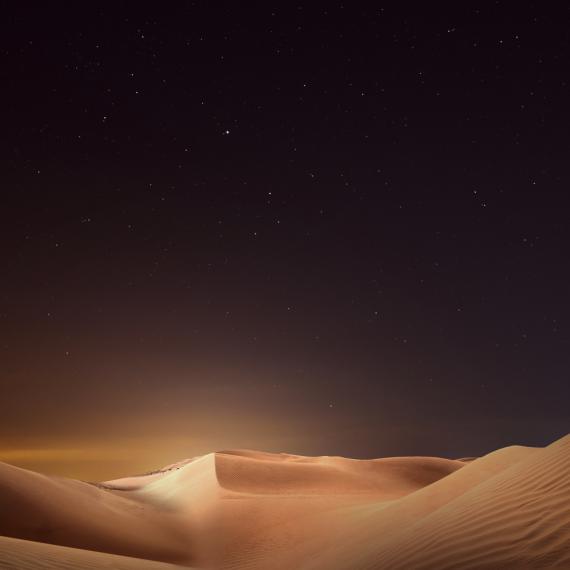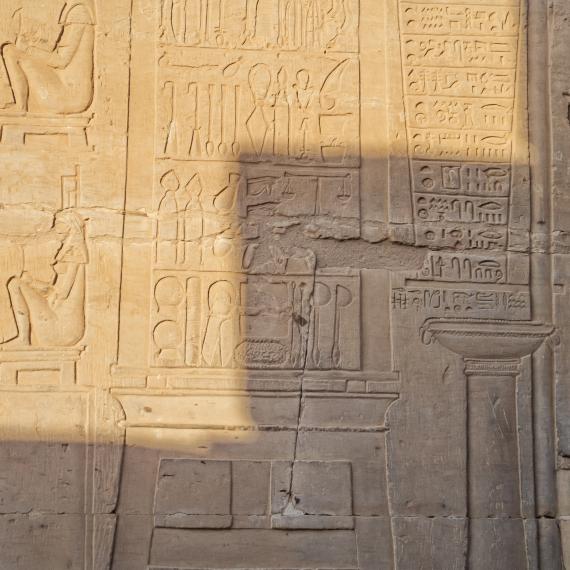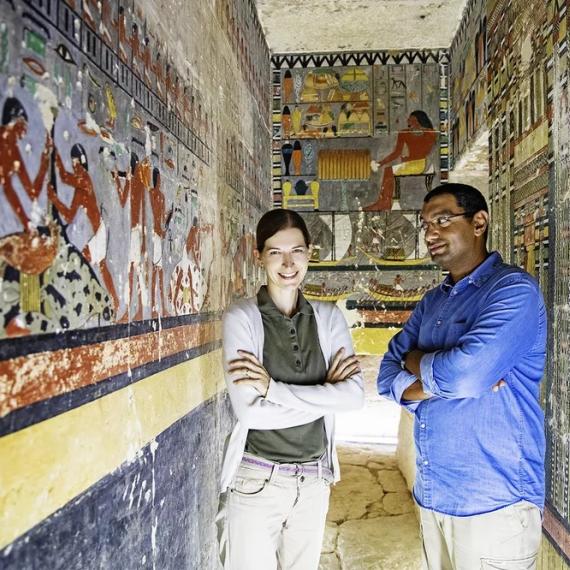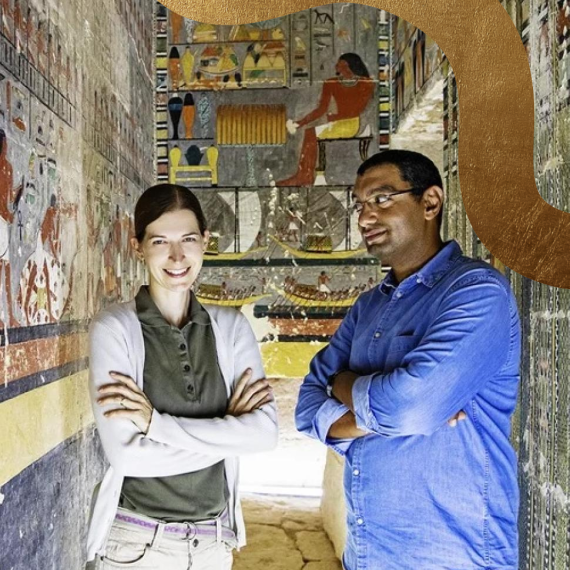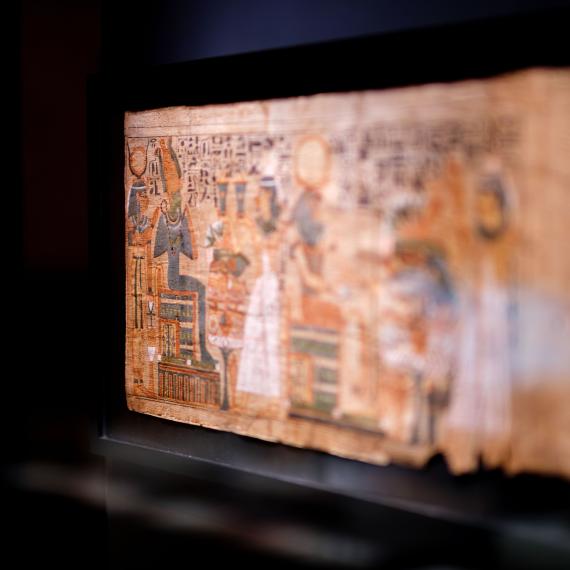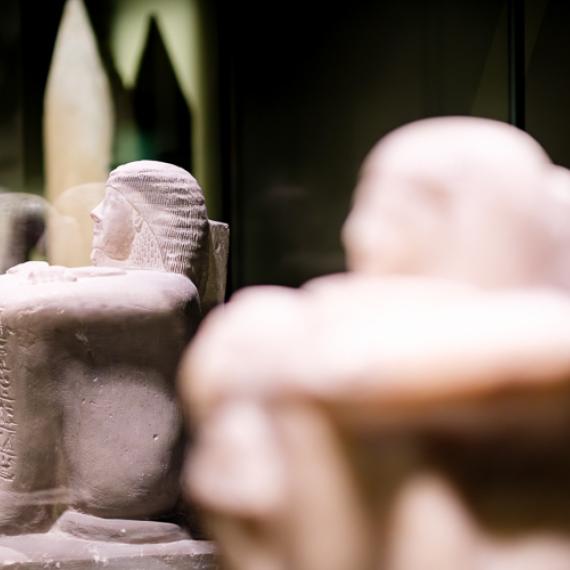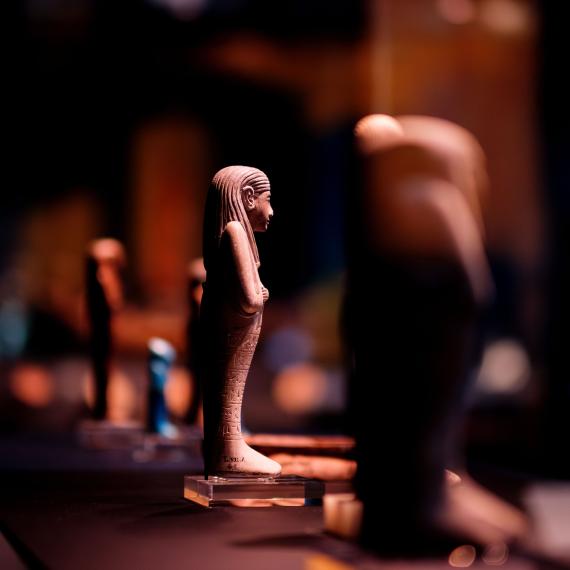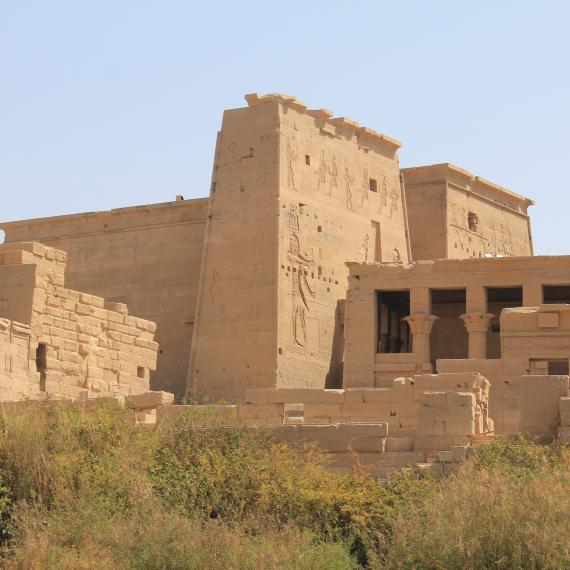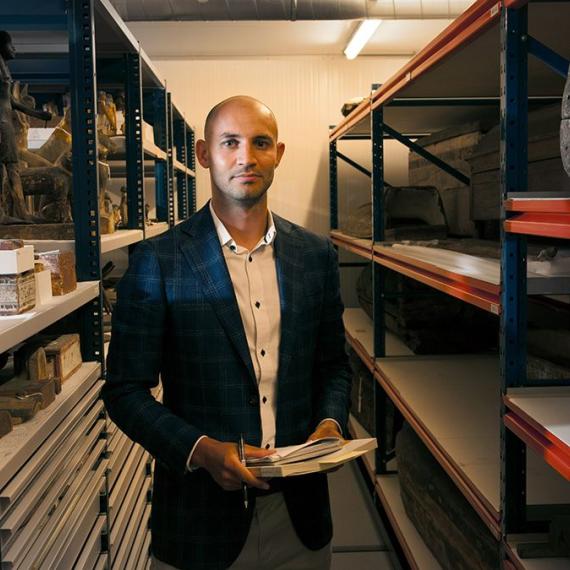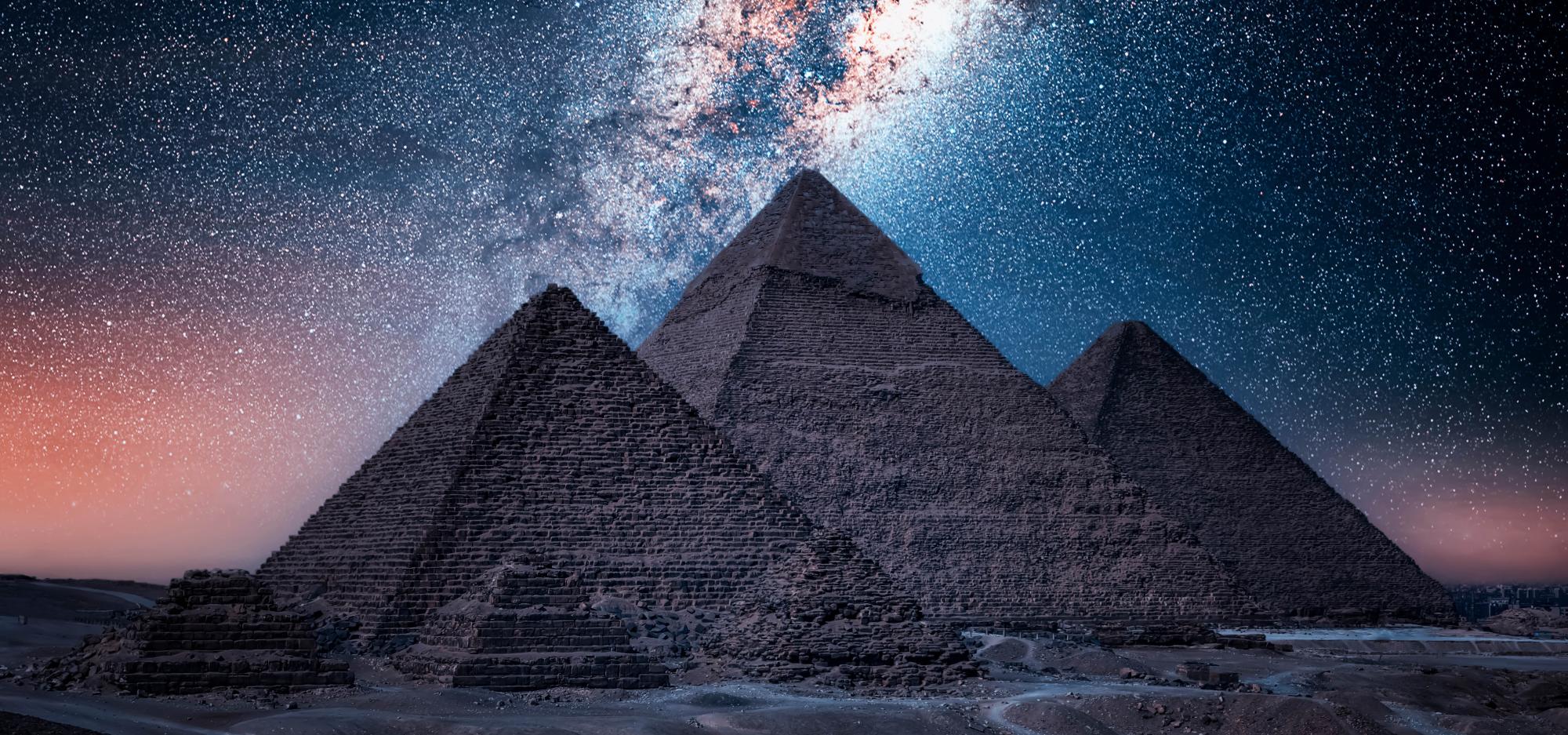
Unlocking the Skies of the Pharaohs by Arthur Harvey
Ancient Egyptian Astronomy Unraveled - Discover how the Ancient Egyptians used their knowledge of the sky to design and position their temples, statues, and roads. Arthur has held an interest in Astronomy since he was just seven years old, after he watched the first artificial satellite, Sputnik 1, pass overhead in 1957. During his career in Metallurgy, Arthur has kept in touch with all aspects of science related to Astronomy, closely following research on the nuclear reactions in the heart of stars, optics, refractory metals, shadow transits, and deep space objects. Since 2008, Arthur has been an integral part of the Perth Observatory Volunteer Group, contributing to volunteer training and educational outreach at tours and public events. Arthur has a special interest in timekeeping and has visited sundials and astronomical clocks all around the world -- including Egypt.
-
Episode transcript
Event MC: Good evening, everybody and welcome to the WA Museum Boola Bardip and the Discovering Ancient Egypt Exhibition. Before we get started with our guest speaker for tonight, I would just like to acknowledge the lands on which we are gathered on to learn here today and acknowledge the Whadjuk people of the Noongar nation and pay our respects to their elders past and present.
Today we have a very special guest speaker. This is Arthur Harvey. Arthur is going to be speaking to us about Unlocking the Skies of the Pharaohs - Ancient Egypt Astronomy Unraveled. Please put your hands together.
Arthur Harvey: Thank you very much for that introduction. And I just want to create a frame of reference for you before I get into my presentation. A time frame of reference. In the year 1610, Galileo pointed a telescope at Jupiter for the first time, and there's been only a mere 400 years since that time to where we are today. The time frame that we're talking about in ancient Egypt is thirty centuries. Thirty centuries. Not just the four centuries from Galileo to the present, thirty centuries. I ask you to keep that in mind when you're contemplating some of the things I'll talk about tonight. As you can see, there's two names on this slide – my own and Lexi Wallace. Lexi has been delayed tonight, but she's a co-author. And when she arrives, we'll say hello to her.
It was Lexi who insisted I wouldn't have done this, but it was Lexi who insisted that a picture of me be in this presentation just to prove that I have been to Egypt.
A brief overview of what I'm going to talk about tonight. Stone circles. I'll come to that, of course, in a moment. Observations very, very critical to what I'm going to talk about. Measurement instruments. Once again, Lexi has hidden in this box down here her own little creation of an ancient Egyptian measuring instrument. And then, of course, the buildings that enable, were enabled to be built by these observations and instruments. Of course, the pyramids, everyone's generally familiar with the pyramids, and then the vast number of temples that exist in ancient Egypt and beyond that, a couple of special examples, including a modern-day legacy. So, let's move on.
Firstly, a map to put you in the context of ancient Egypt. You can see the River Nile running down roughly north to south there. From the Mediterranean Sea at Alexandria and the Delta, down past modern day Cairo, where the, and unfortunately my laser pointer doesn't reflect well off this screen. But nonetheless, I'm sure you're familiar generally with the map of Egypt. So up the top near the delta, you've got where Cairo is today, you've got Giza, Memphis, Heliopolis and the temples associated there. A little further down, of course, you've got the famous temples at Karnak and Luxor on the East Bank and across on the West, the Valley of the Kings. And then further down off the bottom of this map, of course, are the Temple of Rameses II at Abu Simbel.
Many people would be familiar with stone circles. I'm sure Stonehenge comes immediately to mind, but there are many examples of stone circles around the, around the planet. This is one that's been recreated. It predates the third century BCE, and it is located about 800 kilometers south of Cairo. So, well past the area where Egypt, the ancient Egypt buildings were constructed. This is a recreation of that stone circle. And I'll discuss it a little bit further in a minute. But just to point out other ones or other techniques.
This mountain range or hill running north south in Peru has these cairns or mountains built on top of it for exactly the same reason. And our own native people are not remiss here because in Victoria we have our own stone circle. Somewhat less impressive, one might say, but nonetheless used for the same purpose. And that purpose is to determine the extent to which the sun crosses the horizon. The equinox in the middle and the solstices north and south. So, you can see at the top of this picture here, you can see the summer solstice to the left, the winter solstice to the right. Sorry, have I got that right? No, I don't think I have - left and right. Yes, I have. And the equinox in the middle.
And if we just go back to the Egyptian one, you can imagine looking past a particular stone and looking out in a direction that forms a triangle so that you can likewise see the positions of the equinoctes and the solstice. Is everyone generally happy with that construction? Yep. Good nodding heads. And by the way, if there's something desperate that you want to ask me while I'm talking, I'm not an academic that sits here and lectures and expects you to remember what you want to ask at the end. So, if you desperately want to ask a question, feel free to interrupt me and I'll try and cover it while I'm talking.
So, stone circles were the first sort of thing that indicated a very strong, developed observational technique for the Egyptians and for many other people. It doesn't necessarily help you to perfectly measure east or west or north and south, but this technique does. It's published recently, but it's nonetheless a well-known technique of finding the cardinal points of the compass. You can see how easy it is. A gnomon, like a sundial, stick. You make marks at various points in time. You draw a curve through those, describe a circle around the gnomon and draw a line through two marks to find the East-West line. And of course, at right angles to that you would have north and south.
This is a merkhet. It's a particular device that is mimicked in more recent instruments, but it is a particularly important Egyptian tool that enabled them to do lots of things, one of which was to measure time during the night. That's quite an interesting concept. So, it was used in pairs and able to sight on the pole star. And of course, because Egypt's in the northern hemisphere and there was a pole star conveniently located and by the way, it wasn't Polaris. This is 3000 odd years ago. And because of the procession of the equinoctes, you, the pole star moves. So, I'll come to that in a moment.
But the merkhet was used to create a meridian, and then you could tell the passage of stars as they crossed the meridian. That's what that looks like. So, you have a meridian, the same as a meridian of longitude, except this is an imaginary line in the sky. That way, if you're looking towards the North Celestial Pole, as you would be in the northern hemisphere, then you can measure as stars cross the meridian. The meridian is simply the line of longitude that goes over your head wherever you're standing. Once again, comfortable with that sort of analysis of whatever? Good. So, the merkhet was an important instrument.
So, most of the buildings in ancient Egypt were aligned in some way or other with the north, south, east, west aligned. And there's a religious connection to that, which I'll mention. But let me just show you, for example, the pyramids, the famous temple at Amun Ra, at Karnak were aligned in a way that all demonstrated that the Egyptians had a very great command of what was happening in the sky with the sun and also the night sky with the stars.
They placed a fantastic importance on what are referred to or what they referred to as the permanent stars. And by that, I mean the circumpolar stars around the North Celestial Pole. So, any of the stars that are circumpolar for people in Egypt and their latitude at Karnak, I think is I should have checked this, Nadia. Latitude of Karnak? Let me just check, carry one. I think it's about 26 degrees north. Yeah, about 26 degrees north. So, then the north celestial pole for them would have been 26 degrees above their northern horizon and various stars that were never set. And they knew that stars didn't set when they were circumpolar, they were the permanent stars for them. Whereas the stars that rose above the eastern horizon were classified somewhat differently.
So, this is what the elite of the priests. And it's no different to what happened during much more recent times. You know, there were various civilizations, the Greeks, the Romans, and in the modern day, it’s the priests who studied the sky and come up with interpretations of what's happening there. So, a connection with the religious festivals and determining the hours of the night.
Just backtracking slightly there. The Egyptians had a well-established 365-day calendar. A well-established 365-day calendar. I glossed over a couple of these items because my colleague and friend from the Perth Observatory volunteer group, Dr. Amelia McElvie-Fraser is going to be talking to this group a little later on. Not tonight, I think it's in August or September, up in greater detail about the exact astronomical significance of some of these things.
But feel free to, as I say, interrupt me if you're not following these, these things. So, a simple Google Maps picture of the three pyramids. So, you can see the pyramids there. They are all aligned with the compass points. One might not say to the level of accuracy that you might achieve today if you were trying to do it, but nonetheless, to a relatively high degree of accuracy for something built four and a half thousand years ago. Remember that time frame I was asking you to consider?
It's interesting that the slope of the corridors in the pyramids also have a significance. If you look at the Great Pyramid, then you can see from this diagram that various corridors point in various directions nominally towards stars. Those of the north face towards the circumpolar stars at the, at the, at or near the North Celestial Pole, and of another face towards Sirius and the constellation Orion.
Now don't get too excited about this because if you go on to the internet you can find a lot of stories about just whether this is as accurate as I've depicted it here or whether it's a conjecture of people since they were built of trying to find a pattern. Humans are great at wanting to find patterns. That's fine if you're a, if you're a chess grandmaster and you want to understand what's happening on the chessboard. It's a little bit different when you're trying to figure out exactly how these pyramids were aligned.
So, some people agree with the concept that they're pointing towards a group of stars near the pole and to what significance they are when they point towards either Sirius or Orion. The significance of this, I'll try and expand upon briefly, and that is if you go back to the alignment of the pyramids, you'll see that two pyramids are basically in line. And the first one, the third one is just a bit out of line. And similarly with the stars in Orion's belt. And if you go back to the stone circle, you mightn’t have noticed there are two groups are three stars, three stones across the center of that. Once again, supposedly in the same alignment as the stars in the belt of Orion. Once again, if that's how you interpret it, that's fine. Academically, not everyone agrees with it. I put it up there for your consideration.
So, the pyramids, which weren't built at the same time, by the way, the three main ones at Giza are all built so they don't block each other's view of the pole star. And the pole star now is, is the star Polaris. But 3000 years or two and a half to 3000 years ago, it was the Star Alpha, Draco or Thubin. And I'll just move to point that out so you can see where it is. So once again, the position of the pole star moves because of the procession of the equinoctes.
And just to give you an indication of how that all works, you can see the current picture of the pole star Polaris conveniently pointed to by the Big Dipper, Ursa Major. The furthest edge of the Big Dipper points pretty much directly to Polaris.
Of course, the people in the Northern Hemisphere are very happy with the fact that they have a pole star, because here in the southern hemisphere we don't have a bright star right at the South Celestial Pole. Poor us.
I want to move on now to the temple designs. The temples in ancient Egypt would usually either to worship a god and they had lots of gods or to worship a dead pharaoh. And indeed, they had lots of those as well. In this exhibition, you'll be able to see various images. This is one of them, and it's always good to be able to interpret some of the information in there. But I'll talk a little bit more about that in a moment.
So, this is the temple of, at Karnak. And as you can see very nicely between the main columns of the hypostyle hall, the sun rises neatly over that eastern wall. If you move further back, if you move further west, then you can look through the columns of the sphinxes, the ram-headed sphinxes, past the outer wall of the temple, down through the columns of the hypostyle hall and see that beautiful alignment. And when the sun is high in the sky, that's what the hypostyle hall columns look like.
There's a bit of a clue in there because I ask a question of you in a later slide and there's a clue in this image here that might help you answer that question. Inside the temple you have these magnificent columns. Basically, everything was carved inside these temples, particularly where we can see it now, where it's been protected from the weather. Obelisks were another common part of the Egyptian architectural style. And unfortunately, you don't have to go to Egypt to see them because there's one in New York, there's one in London, there's one in Paris, and there's a couple in Rome. So, they've been stolen. I'm sure that's made the news recently in various ways. A close up of the ram-headed sphinxes, that line the avenue, the east-west avenue near the Temple of Karnak.
One of the things that I was very fortunate to have happened to me when I was in Egypt was that I was told to look up. You see many, many tourists walking through these temples and they are not looking up. And yet the best-preserved colors are on the underside of the lintels. And that's the that's the definition of the sense of a hypostyle hall. It's just a hall where the wall, there are no walls, there's just columns surmounted by lintels. And you can see the cartouches here, but more importantly, you can see, it’s at the bottom of this slide, you can see the five-pointed stars which are typical of the Egyptians presentation of the night sky. And indeed the winged sun God carrying the sun across the sky. There are various depictions of the, of how that happens. This just happens to be one of them.
So that was a temple on the eastern side of the Nile. And typically those temples were to worship gods. On the west side of the Nile, the side, the the side of the dead, if you like, where the sun sets, where everything dies, you have the funerary temples. And this is the funerary temple of the only female pharaoh, Queen Hatshepsut. Yeah and you can pronounce it that way. Hat, cheap, suit. And it's a beautiful temple in a different style. But once again, with an east west alignment with this beautiful long ramp and colonnade running into the temple based into, dug into and built into the cliff wall. Different view of it there. And Hatshepsut was a great fan of the falcon-headed god. And so there are many of the falcon-headed god statues near her temple. This is a particularly interesting one and I think Lexi has arrived and is standing at the back and I'll now invite Lexi to come forward.
This is the temple at Dendera and the temple at Dendera has this beautiful image here.
Hello, Lexi. Nice. This is my coauthor, Lexi Wallace from Perth Observatory Volunteer Group (applause). And she is able to display a copy of the Dendera Zodiac. So, I'll just put up a better view. So, this is a version of the Egyptian zodiac. So just like we have a zodiac, so they created a zodiac with the constellations that they knew of at the time. Not as many as the 88 constellations that we see, but then again, they couldn't see all the way to the south Celestial Pole.
Thank you, Lexi. Don't let anyone pinch that. Although you can buy them here, can't you? Right.
Not all of the funerary temples survived. There was a fantastic development for Amenhotep III. But all that's left are these two statues called the Colossi of Memnon. Now, I don't know about you, and I'm completely unfamiliar with the time frame of ancient Egypt compared with the Star Wars time frame. And I'm not exactly sure where George Lucas got his inspiration from, but I'm guessing that that, but that looks pretty much like a Stormtroopers helmet to me.
My all-time favorite, of course, and one of the things I insisted upon when I went to Egypt is to visit Abu Simbel and the Temple of Ramesses II or if you read Shelley's poem Ozymandias. Not one statue for him, but four massive statues. And this temple has of course been moved because when the Nile River was dammed at Aswan, Aswan, this temple was below where the dam was. So, the whole temple has been moved. And I just want to point out just how accurate the ancient Egyptians, with their observations, with their relatively rudimentary equipment, how accurate they were able to build temples.
The temples access here is oriented so that twice a year and this time it's not the equinoctes or the solstices. It's Ramesses birthday and another date where the sun would shine into the inner sanctum of this temple. And in the inner sanctum, there were four statues, and they arranged for the sun to shine on just three of those statues. The reason it doesn't shine on the fourth one is he's hiding here. The reason it doesn't shine on the fourth one is because his name is Ptah. I'm sorry. I got something stuck on my tongue. It's P T A H and he's a god of the underworld so the sun wouldn't shine on him. So, the sun has been arranged in the orientation of this temple, not to shine on the god of the underworld.
There's a very interesting situation in the modern interpretation of Egyptian astronomy in so far as there is a particular book that refers to a star that we know by the name of Algol in the constellation Perseus. Now this is a variable star, and its magnitude varies quite considerably over a short period of time. Now that is something that these centuries of observation by the Egyptians has apparently been able to be reflected in one of the texts. So, the variation is regular. It's significant enough to be noticeable with the naked eye. Probably not from Perth here because of the light pollution that we now have but certainly in ancient Egypt with dark skies, they would have been able to notice the magnitude variation of this variable star. And a particular calendar, oddly enough, of lucky and unlucky days compiled over 3000 years ago, is said to be the oldest record of the discovery of a variable star.
Now that I come back to my original comments about the time frame and their ability to observe the night sky, this is an absolutely fantastic achievement. I also mentioned that I'm not an academic, so there are some academic arguments that this is not correct. But on the other hand, some academics do believe that this is a proper interpretation of the variable star Algol. There's Algol there in a modern day map of the constellation Perseus.
Just before I close, I would like to refer to this legacy of the Pharaohs, because relatively recently we have sent a rocket with a probe on the top of it towards the asteroid Bennu. Now the asteroid Bennu happens to be one of these that is predicted to come close to Earth in the next couple of hundred years and could even be as it is perturbed, as it comes into the inner solar system, it could even be on a collision course with Earth around about 2135 or something like that. So, we've sent a probe to Bennu and Bennu is named after an Egyptian god who was the identity of that was shown or depicted as a I think it's a crane or a similar wading, wading bird.
So, NASA's OSIRIS-REx mission is being sent to collect a sample from the asteroid Bennu. It's already done that. It successfully touched down on Bennu, placed a cylinder there, blasted some nitrogen on to the surface to blow the rock up into the, into the recovery container. And it's as I speak, it's on its way back to Earth. So, all of these things indicate that what happened those thousands of years ago is in the forefront of people's mind when we try and learn more about our solar system. So, these are quite recent publications by the ABC to tell us what's happening with the return of the OSIRIS-REx spacecraft with its samples from the asteroid Bennu.
And there I would like to conclude my presentation and I'd like to thank Lexi standing at the back for her contribution to it. I did tell them, Lexi, that it was you who insisted that I put a picture of myself there. And I'm happy to take questions from you.
[Applause]
Event MC: Time for three questions. I will start over here.
Audience member 1: Fantastic presentation. Thank you so much. I've got a very specific question about Hatshepsut. So, the funerary temple that you showed seemed to be in remarkable condition for a pharaoh that was subject to like a damnation memorial. I'm just wondering why that temple was preserved, it seemed. Was it considered sacrilegious to destroy a funerary temple? I know that's a really specific question, but just sort of. Yeah.
Arthur Harvey: Thank you. It's an excellent question. And what they, what I believe the answer to that is the temple as a whole would not have been destroyed. Not specifically because of the connection with Hatshepsut. What would have been destroyed, and I have seen it there, are the faces, her face on the statues of her in the temple. So collectively the temple - all preserved. Individuals, statues and her cartouches. I didn't point them out exactly, but the oval, sort of the rectangular ones with the round corners contain the cartouches the precise name of the pharaoh. They have been destroyed as well. So, temple all good. Statues, cartouches destroyed.
I must have missed pointing it out on one slide because I did say that there was a question there, and I must admit I didn't see it come up when I was talking. But one of the questions was why would the Egyptians have built their temples in the floodplain of the Nile, such as to risk them being destroyed? And then I gave you a clue by showing you the hypostyle columns in the Temple at Karnak. Anyone want to venture an answer to the question of why they would build the temples there?
(inaudible)
Audience member 2: Weren't crocodiles sacred? And so, the Nile flooding would enable crocodiles to swim into some of the temples.
AH: That’s true but not the answer I’m looking for.
Audience member 3: Would they have reflection pools or anything like that that needed to be refilled?
AH: They did have reflection pools. That was a very common feature of the temples, but that's not the answer I'm thinking of either. I will mention it to you. Those columns are like way taller than that. And think of how easy it would be if you saw the fact that they're not solid columns. They consist of discs of rock that have been carved into short disks. So how easy would it be when the Nile floods to let water in and just float those discs up and put them on and put them on and put them on to build those columns? That is apparently how they did it. Thank you very much.
[applause]
More Episodes
John Mirosevich explores the varied history of Thonis-Heracleion, Egypt’s greatest Mediterranean port for 400 years.
Listen to Hon Dr Anne Aly MP who joined us at Afterlife Bar for a presentation on the Discoveries of Ancient Egypt exhibition.
Join committee members of The Ancient Egypt Society of WA Inc for a unique opportunity to dig deeper into Egyptology.
Dean Kubank revisits the Temples of Nubia and the enchanting Temple of Isis at Philae.
Celestial Timekeeping in Ancient Egypt - Discover how Ancient Egyptians used the heliacal rising and setting of stars to construct their star clocks and civil calendar.
The life of the average Egyptian could sometimes be precarious and short. Broken bones, infections, and arthritis were all common among the general population.
Discover the story of the pharaoh Djedkare, his family and courtiers, and take advantage of the rare opportunity to hear from visiting international Egyptologist Dr. Hana Vymazalová of Charles University, Prague.
Discover the story of the pharaoh Djedkare, his family and courtiers, and take advantage of the rare opportunity to hear from visiting international Egyptologist Dr. Mohamed Megahed of Charles University, Prague.
Discover Egypt’s ancient legends of creation, death and resurrection. Tales of Ra, Osiris, Isis and Horus will unlock the meanings of the art, religion and funerary practices of ancient Egypt.
The Dynasty 6 Vizier named Weni the Elder, who lived about four and a half thousand years ago, had a detailed biography written on the outside of his tomb.
How, when and why was mummification invented? The answers may surprise you.
As part of our evening Afterlife Bar series at WA Museum Boola Bardip, we welcome a series of speakers to dive deeper into Egypt. Join us this week as we hear from Dean Kubank on Temples and Tombs.
Renowned expert in ancient Egyptian history Daniel Soliman delivered a fascinating talk, as we celebrated the launch of the WA Museum Boola Bardip's Discovering Ancient Egypt exhibition.
